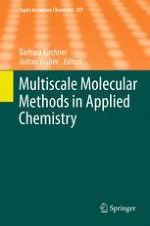2012 | OriginalPaper | Buchkapitel
Thermodynamic Properties for Applications in Chemical Industry via Classical Force Fields
verfasst von : Gabriela Guevara-Carrion, Hans Hasse, Jadran Vrabec
Erschienen in: Multiscale Molecular Methods in Applied Chemistry
Verlag: Springer Berlin Heidelberg
Aktivieren Sie unsere intelligente Suche, um passende Fachinhalte oder Patente zu finden.
Wählen Sie Textabschnitte aus um mit Künstlicher Intelligenz passenden Patente zu finden. powered by
Markieren Sie Textabschnitte, um KI-gestützt weitere passende Inhalte zu finden. powered by
